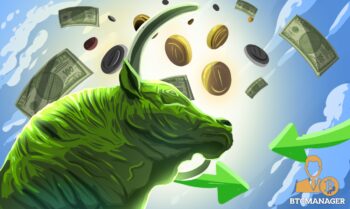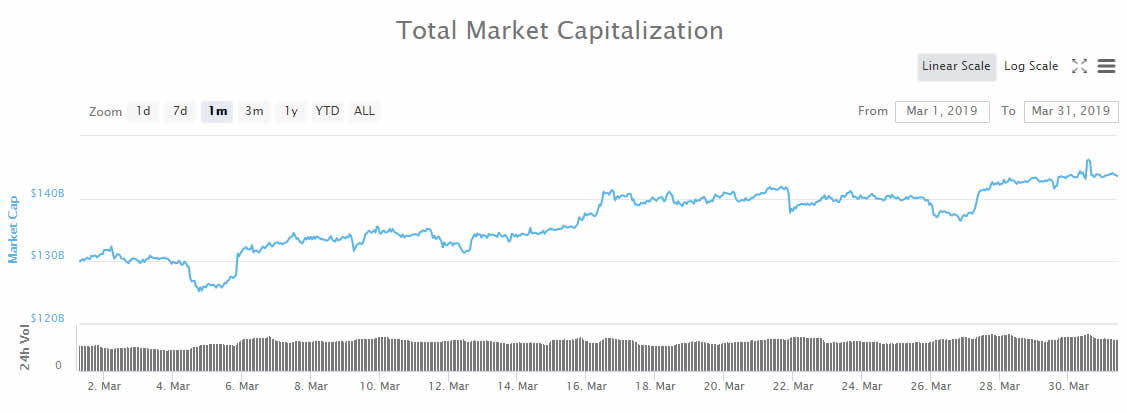2019-5-27 17:13 |
Who could forget the end of 2017? A booming bitcoin price dragged the entire market up as the OG crypto tickled the underbelly of $20,000 on December 16. Cryptocurrencies were seemingly on the brink of imminent widespread adoption.
Then they fell. And fell. And continued to fall, hitting what pundits hope will be a low point in December 2018 – January 2019. Barry Silbert points to the burnout of, and sell off by, ICOs as an explanation for the mood-dampening bear market of 2018. His assertion amounts to an exit from digital to fiat currency via ICO tokens.
But there could be a bit more to the story. Changing regulatory environments in South Korea, where the hype was strongest, may have had an oversized influence on the latest bear market.
Grayscale’s Barry Silbert Signals The End Of The ICO CrazeIn an interview with Bloomberg TV last week, the Grayscale CEO argued that the difference in sentiment around digital assets makes the current bullish run less of a technical market swing and more of a fundamental shift. He described 2018 as:
“… the unwind of the ICO market, so you had all of the demand for ICOs went away and then the projects that raised all the bitcoin were trying to stay in business and were selling the bitcoin.”Barry Silbert, Grayscale Investments Founder & CEO
Grayscale recently reported a 42 percent increase in capital flows for Q1 2019, with hedge funds driving much of that growth. Silbert attributes the changing landscape to a number of factors, including the demise of the ICO market and fewer fears around security.
While bitcoin has attracted the lion’s share of new institutional demand for digital assets, Silbert sees a starkly different market atmosphere than in previous bull runs.
However, he may have neglected an important factor.
The Korean Crypto CrazeA survey in December 2017 reported that three out of ten Korean workers were invested in crypto. Analysts at BlockWater Capital in Korea recall the heady days of late 2017:
“Last winter, you would hear senior citizens, like ladies and gentlemen, eating fried chicken, talking about bitcoin.”Brian Jeong, analyst at BlockWater Capital
Erica Kang, a partner at the firm, added: “And at all cafes, at every table. Suddenly, it was just like a hyped thing.”
The Korean Won represented the fourth largest fiat trading currency against bitcoin in the earlier half of 2017, after the U.S. dollar, Yen, and the Chinese Yuan. Crypto on Korean exchanges was, at its peak, trading for over fifty percent higher than elsewhere. That became known colloquially as the kimchi premium.
Korean Regulators Dampen The RushMeanwhile, Korean officials were scrambling to outline a regulatory approach to the sector. Faced with a spree of exchange hacks and scandals sitting uneasily alongside surging interest in digital assets, crypto posed a threat to an already brittle economy.
Discussions around regulating the industry began in July 2017. But contradictory remarks by lawmakers and the country’s two regulators, the Financial Supervisory Service (FSS) and the Financial Services Commission (FSC), created an environment of confusion and uncertainty.
The chaos wasn’t helped by the sudden ban on ICOs in September 2017. As Park Sung-joon from Dongguk University explained:
“The government didn’t have much time to prepare putting together a policy about blockchain and cryptocurrency. So, they just got busy banning ICOs, because that way, they thought, they can protect the investors.”Park Sung-jeon, head of a blockchain research center at Dongguk University, Seoul
The abruptness of the ICO ban led to rumors that the country was set to ban crypto altogether. The rumors swirled until a more definitive statement was announced late January of 2018.
Crypto would not be banned, according to the announcement. Exchanges would be allowed to continue to operate, but with a caveat: they could only provide services to Korean nationals using a connected real-name bank account.
The real-name/Korean-only decision was a major blow to Chinese enthusiasts in particular, as they were forced by government regulations to use offshore exchanges. Demand plummeted in Korea and by January 2019, the kimchi premium had turned into a kimchi discount.
With A Softening Stance Comes Market OrderBy May 2018, the FSS had softened its views on crypto markets. With the appointment of Yoon Suk-heun, the language shifted toward the “positive aspects” of cryptocurrencies and the need to protect investors.
No longer proposing regulations on the run, Korean financial services watchdogs finally had control over the sector. They had successfully reined in the frenzied rush for digital assets.
And with that, helped usher in significantly weaker demand in the fourth largest market in the world (albeit with a Chinese prop-up).
Counterintuitively, Korean regulators, by finally creating certainty in the industry, also may have contributed to dampening prices in 2018 by removing the urgency to invest in crypto in Korea before it was too late.
Barry Silbert made the point that 2018 marked a hangover from the ICO frenzy. The Korean experience is surely analogous here, with regulatory certainty bringing with it a less extravagant race to market. All of this may be healthy in the long run, but it came with some short-term pain.
And if this perspective has merit, what the cryptocurrency markets saw at the end of 2017 was little more than gold rush-style irrational exuberance – making Grayscale’s cheeky new “drop gold” ad campaign more than a little ironic.
The post How Korean Regulators Helped Bust The ICO Party (And Usher In The Recovery) appeared first on Crypto Briefing.
origin »Emerald Crypto (EMD) на Currencies.ru
|
|










